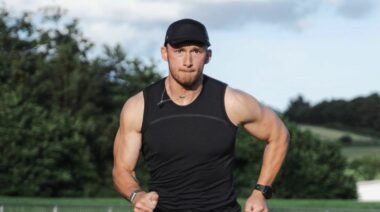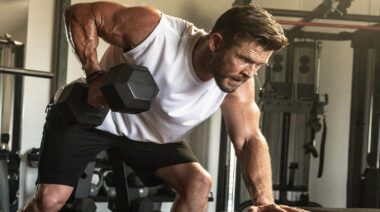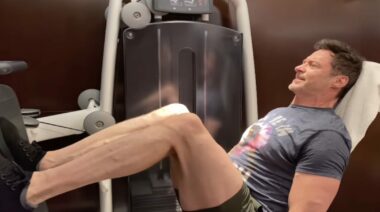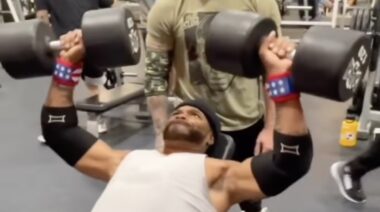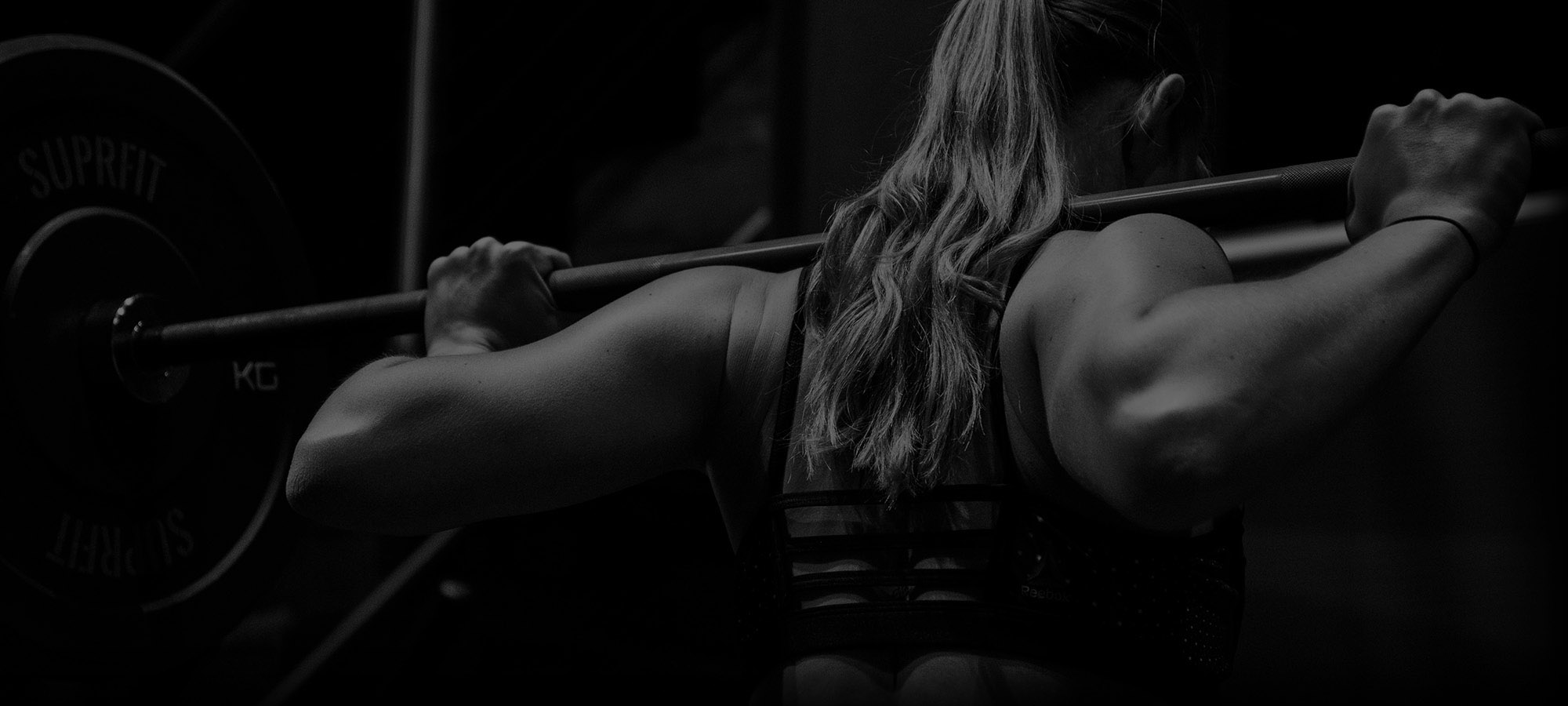People love to talk about how complicated the shoulder is. Given that the shoulder complex is actually four joints and involves a large number of muscles, they aren’t exactly wrong. The trouble is that this baseline observation is frequently used as a justification for overly complex treatment ideologies.
The shoulder is complex, but as a strength athlete, the demands placed on it aren’t. Your shoulder only needs to do a few things well to stay healthy and happy for the length of your lifting career. Here I’ll specify what your shoulder needs to do and how to fix it if it can’t.
Basic Shoulder Anatomy
The shoulder complex is generally described as containing four joints:
- The glenohumeral (GH) joint – where your upper arm meets your shoulder blade
- The scapulothoracic joint – where the shoulder blade moves on your ribcage
- The acromioclavicular joint – where your shoulder blade meets your collarbone
- The sternoclavicular joint – where your collarbone meets your sternum
Within this complex are a host of muscles that enable the shoulder to move. The rotator cuff crosses the GH joint and is made of four muscles: supraspinatus, infraspinatus, teres minor, and subscapularis. The scapular muscles of upward rotation (upper and lower trapezius and serratus anterior) and downward rotation (rhomboids, middle trapezius, levator scapulae, and pectoralis minor) are located in your upper back with the position of your pectoralis minor, which is proximally attached on the third, fourth, and fifth ribs. On top of that are the primary shoulder complex muscles like the lats, pectoralis major, and deltoids.
Rotator Cuff Real Talk
The purpose of the rotator cuff is one of the most poorly understood concepts in popular fitness. This is probably to do with the etiology of rotator cuff injuries. Rotator cuff problems are common in throwing athletes and other individuals whose sports have heavy overhead demands. As a result, we have a lot of evidence about cuff injuries and experience with their rehab.
The name “rotator cuff” is also a bit misleading. The cuff absolutely rotates the humerus on the glenoid, but its real purpose is to maintain joint centration. Basically, it keeps the humerus stuck into the glenoid fossa in the most optimal position for stability and force development. There are two parts to this task:
- Proper strength in the required direction. Seeing as the goal is to keep the humerus stuck into the joint, the cuff needs to be good at resisting distraction.
- Proprioception. Proprioception is the ability of little nervous organs in your tendons to keep your brain informed of your joint positions. It’s hard to maintain optimal alignment when your nervous system is working with faulty data.
Many people exhibit passive internal rotation of their shoulders, but this is not usually a rotator cuff issue. Both the latissimus dorsi and the pectoralis major can internally rotate the humerus, and in addition to poor scapular position, these two tend to be the primary culprits of passive internal rotation. Instead of focusing on stretching your tight lats and pecs, work on obtaining a neutral position of the thoracic spine and scapulae to clear up your passive internal rotation issues.
Exercises for Rotator Cuff Health
Deadlifts and loaded carries are good exercises to improve the traction strength of your cuff. However, it’s important to use a weight that won’t actually pull your shoulder down so you can maintain perfect form and ideal scapular position.
Kettlebell screwdrivers and arm circles are two of your best options for improving rotator cuff proprioception. Adding these two exercises into your warm up should be enough to wake up your nervous system.
Kettlebell Screwdriver:
- Lie on your back with your knees bent and your feet resting flat on the floor. This is called a hook lying position.
- Place a light kettlebell in one hand.
- While keeping your shoulder blade neutral, raise your arm straight up into the air (basically the bottom position of a Turkish get up).
- Rotate your arm clockwise and counterclockwise. Maintain your scapular position, and make sure your upper arm is rotating, not just your forearm.
- Do this 10-15 times per side.
Arm Circles:
- Stand with good posture and raise your arms in front of you 90 degrees.
- Thinking of your middle fingers as a pen, draw small circles and slowly expand them until they’re roughly the size of a dinner plate.
- Change directions and repeat.
- Do this 3-4x in each direction. Keep your arms dead straight the entire time and focus on feeling the motion at the shoulder.
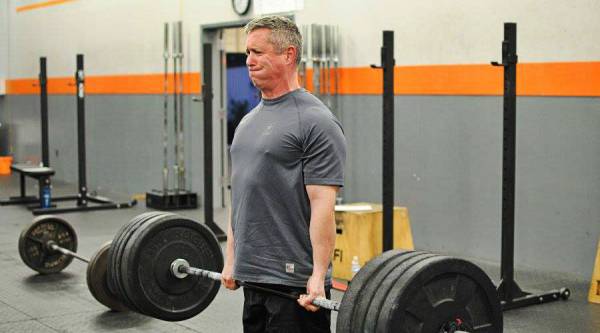
Deadlifts can be great for improving rotator cuff traction strength, provided the load isn’t so heavy it pulls your shoulder out of position.
Scapulae – The Foundation of Shoulder Stability
Unfortunately, not everyone who has cuff injuries has cuff issues. Sometimes the rotator cuff tendinopathy is a symptom of something else, like poor scapular positioning, or scapular dyskinesis. In my experience, this is far more often the primary cause in strength athletes.
The scapulothoracic joint is unique in that it doesn’t have a true articulation like most joints. Your scapulae move on the surface provided by your thoracic vertebrae and your ribs. While the specifics of scapular motion are complicated, the most important aspects are proper resting position, and healthy upward and downward scapular rotation.
Neutral Resting Position
The go-to movements for creating a neutral resting position are diaphragmatic breathing, followed by scapular squeezes with external rotation. The breathing will help you achieve a more neutral thoracic spine and the retraction will help return your hopelessly abducted scapulae to a more neutral position, about three inches from the center of your vertebrae.
Diaphragmatic Breathing:
- Assume a hook lying position as described earlier.
- Rest one hand on your stomach and the other on your sternum.
- Take deep breaths, drawing the breath down and into your belly.
- Exhale forcefully and feel your core muscles contract to help push the air out.
- Continue for 2-3 minutes, or until you feel some of the tension in your upper back start to dissipate.
You are trying to breathe into your stomach first and then let the air inflate your lungs from the bottom up. You should feel your stomach rise for the first ⅔ of the breath and your chest rise for the last ⅓. Your upper back should press into the ground lightly when your lungs are fully inflated.
Scap Squeezes With External Rotation:
- Assume a standing position and take a deep breath.
- As you exhale, roll your shoulders back and feel them relax downwards. This is your starting position.
- Bend your elbows 90 degrees, so your palms face each other.
- Tighten the muscles in your mid back and pull the scapulae together. Your hands should start to move outwards.
- Once you’ve squeezed your shoulder blades as far as you can, move your hands backward while maintaining the 90 degree bend at the elbow. You should feel additional tension in the upper back.
- Now relax to the starting position.
- Repeat this sequence (starting with the scapular squeeze) for 2-3 sets of 10-15 reps, or until you can feel your scapulae in a better position.
Upward Rotation
If you have trouble getting your arms overhead, try wall slides with forward pressure.
- Place the pinky side of your hand on a wall like you’re trying to karate chop it.
- Apply a bit of pressure forwards like you’re trying to push the wall over.
- While maintaining pressure, slide your hand upward in a slight outward diagonal.
- Reach as far overhead as possible without shrugging.
The forward pressure should help wake up your serratus anterior to increase upward rotation and give you some more range. Once that gets easy, start to take your hands off the wall at the top like you’re doing the Y in YMCA, but make sure you don’t extend your back or raise your ribs. This should help strengthen your lower trap.
Once you can perform wall slides with perfect form, my favorite exercise for improving upward rotation is the overhead press. Craig Marker recently wrote a great piece on how the bottoms-up kettlebell press in particular can improve shoulder stability through nervous irradiation.
Downward Rotation
Most people don’t have as much trouble with downward rotation, but strengthening the muscles in your mid back is important for overall shoulder health. These muscles include the middle trapezius, rhomboids, levator scapulae, and pectoralis minor.
To target this area, try rowing exercises with a slow, controlled motion. Focus on retraction at the end of each rep. A few sets a week on a cable machine or bodyweight rows are all you need.
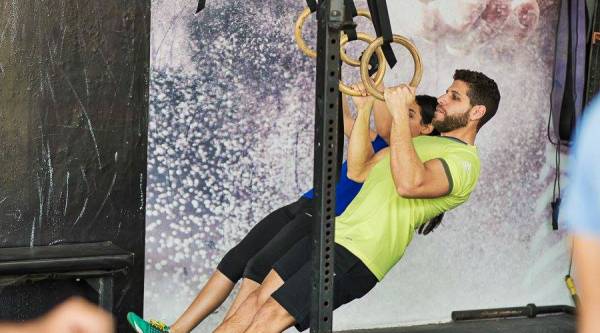
Slow, controlled rowing exercises can help with scapular retraction and downward shoulder rotation.
Putting It All Together
Here is an example of how these exercises can be incorporated into a simple warm up before a shoulder-heavy workout:
- Diaphragmatic breathing: 2-3min
- Arm circles: 15 reps each direction
- KB screwdriver: 15 reps each side
- Banded retraction with external rotation: 10-15 reps
- Y-wall slide with liftoff: 15 reps
- Overhead press: 10-15 reps with an empty bar, or bottoms up press with light kettlebell
Repeat for 2-3 rounds.
Throw in some pulls or loaded carries and there you go: A simple routine to keep your shoulders healthy and happy without spending hours on maintenance.
Complex Joints, Simple Maintenance
The human body is an incredibly complex machine and the shoulder joint is one of the best examples of this concept. The movement potential of the joint is immense and allows us to do all sorts of awesome things from snatches to throwing 90mph fastballs.
Our bodies want to move well. To accomplish this, you typically don’t need complicated neurological reprogramming or twenty minutes of banded distractions to keep your shoulders healthy. All you need is to understand what the shoulder is supposed to do and practice those things in a safe way that reinforces proper alignment and motion. Keep things simple and your shoulders will thank you.
More on Joint Maintenance and Injury Prevention:
- 5 Injury Prevention Exercises to Build Bulletproof Athletes
- You Are Not Your Shoulder Ultrasound
- Banish Pain Permanently: Basic Drills to Repair Your Posture
- New on Breaking Muscle Today
Teaser photo courtesy of J Perez Imagery.
Photo 1 courtesy of Wikimedia Commons.
Photo 2 courtesy of CrossFit Impulse.
Photo 3 courtesy of CrossFit Stars.

